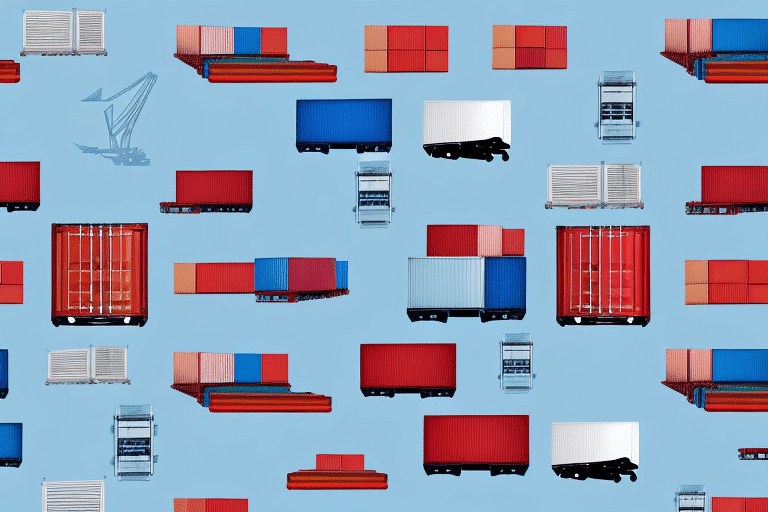Understanding 3PL and Its Importance for Ecommerce Startups
Starting an ecommerce business is both exciting and challenging. While setting up an online store has become more accessible, managing operations such as order fulfillment and logistics can be overwhelming. Outsourcing these tasks to a third-party logistics (3PL) provider offers a viable solution, handling everything from warehousing to shipping. This article delves into the various 3PL options available for ecommerce startups and how they can optimize supply chain management.
What is 3PL?
3PL refers to the outsourcing of logistics and fulfillment operations to a third-party service provider. These services typically include warehousing, order fulfillment, inventory management, shipping, and delivery. For ecommerce startups, partnering with a 3PL can minimize the costs and complexities associated with establishing an in-house supply chain infrastructure.
Why 3PL Matters for Ecommerce Startups
3PL providers bring expertise and resources that allow businesses to handle large order volumes and manage peak season demands efficiently. They offer scalable solutions tailored to each business's specific needs, enabling startups to grow without the logistical burden. By leveraging 3PL services, ecommerce businesses can focus on core activities like product development, marketing, and customer service, ultimately enhancing revenue and customer satisfaction.
Key Benefits of Using 3PL Services
Outsourcing supply chain management to a 3PL provider offers several advantages:
- Cost Savings: Eliminates the need for significant upfront investments in warehousing and logistics infrastructure.
- Expertise: Access to a team of logistics professionals who can optimize processes and reduce operational costs.
- Scalability: Easily scale operations up or down based on business needs without incurring fixed costs.
- Advanced Technology: Utilize sophisticated software systems for real-time tracking of inventory and shipments.
- Enhanced Customer Satisfaction: Faster and more accurate order fulfillment leads to improved customer experiences.
According to a Statista report, the global 3PL market is projected to reach $1.3 trillion by 2027, highlighting its growing significance in the ecommerce sector.
Choosing the Right 3PL Provider
Selecting the appropriate 3PL provider is crucial for the success of your ecommerce business. Consider the following factors when making your decision:
Experience and Reputation
Opt for providers with a proven track record in your industry. Experienced 3PLs understand the unique challenges and can offer tailored solutions to meet your specific needs.
Range of Services
Ensure the provider offers a comprehensive suite of services, including warehousing, order fulfillment, inventory management, and shipping. Integrated services can streamline operations and improve efficiency.
Technology Capabilities
Advanced technology is essential for real-time tracking and inventory management. Providers with robust IT systems can offer better visibility and control over your supply chain.
Scalability
Your 3PL partner should be able to scale their services in line with your business growth. This flexibility ensures that your logistics operations remain efficient as demand fluctuates.
Location
The geographical location of the 3PL's warehouses can impact shipping times and costs. Choose providers with strategically located facilities to optimize delivery speeds.
Customer Service
Effective communication and responsive customer service are vital for addressing issues promptly and maintaining smooth operations.
Top 3PL Providers for Ecommerce Startups
Here are some of the leading 3PL providers that ecommerce startups should consider:
- ShipBob: Offers same-day shipping and competitive pricing tailored for startups.
- ShipMonk: Features a network of warehouses across the US and Canada, ideal for businesses with a broad customer base.
- Fulfillment by Amazon (FBA): Provides access to Amazon’s extensive logistics network and millions of Prime members.
- Rakuten Super Logistics: Known for fast and accurate order processing, specializing in ecommerce fulfillment.
When choosing a provider, consider factors like pricing, location, and the specific services they offer to ensure they align with your business needs.
Evaluating the Performance of Your 3PL Provider
Regularly assessing the performance of your 3PL provider is essential to ensure they meet your business expectations. Key performance indicators (KPIs) to monitor include:
- Order Accuracy: Ensures that orders are being fulfilled correctly.
- Delivery Speed: Measures the time taken to deliver orders to customers.
- Inventory Accuracy: Tracks the precision of inventory management.
- Customer Satisfaction: Gauges the overall customer experience with your fulfillment processes.
Utilize data analytics and regular communication to address any performance issues promptly. A reliable provider should also adapt to your evolving business needs and offer flexible solutions.
Common Challenges with 3PL Services and Solutions
While 3PL services offer numerous benefits, they also come with potential challenges:
Communication Breakdowns
Clear and consistent communication is vital. Establish robust communication channels and regular check-ins to ensure alignment with your provider.
Order Delays
Delays can harm customer satisfaction. Implement real-time tracking systems and work closely with your 3PL to identify and mitigate causes of delays.
Inventory Inaccuracies
Accurate inventory management is crucial. Utilize integrated software systems for real-time inventory tracking to minimize discrepancies.
Lack of Control
Outsourcing logistics can lead to perceived loss of control. Choose a provider that offers transparency and real-time insights into your supply chain operations.
Cost Management
While 3PLs can reduce operational costs, initial expenses might be high. Negotiate flexible pricing models, such as pay-per-use or volume-based pricing, to manage costs effectively.
Best Practices for Partnering with a 3PL Provider
To maximize the benefits of working with a 3PL provider, consider the following best practices:
- Set Clear Goals: Define your objectives and expectations from the outset.
- Maintain Open Communication: Regularly discuss performance metrics and address any concerns.
- Be Transparent: Share your business needs and growth plans to enable effective collaboration.
- Provide Adequate Training: Ensure the 3PL team is well-versed in your products and processes.
- Conduct Regular Audits: Periodically review your supply chain to identify and implement improvements.
Cost Comparison: In-House Fulfillment vs. Outsourcing to a 3PL Provider
When deciding between in-house fulfillment and outsourcing to a 3PL, consider the following cost factors:
In-House Fulfillment
- Fixed Costs: Investments in warehousing space, infrastructure, and personnel.
- Operational Costs: Ongoing expenses related to order processing, shipping, and inventory management.
Outsourcing to a 3PL
- Lower Fixed Costs: No need for significant upfront investments in logistics infrastructure.
- Variable Fees: Costs based on the volume and services used, offering flexibility.
- Scalability: Easily adjust costs in line with business growth or seasonal demands.
Conduct a thorough cost-benefit analysis based on your business's specific needs and projected growth to make an informed decision.
Future Trends in the 3PL Industry
The 3PL industry is rapidly evolving, driven by technological advancements and shifting customer expectations. Key trends to watch include:
- Automation and Robotics: Increased use of automated systems and robotics in warehousing to enhance efficiency.
- Same-Day and Next-Day Delivery: Growing demand for faster delivery options.
- Omnichannel Fulfillment: Integrated solutions that cater to multiple sales channels seamlessly.
- Sustainability: Emphasis on environmentally-friendly practices and sustainable logistics solutions.
Staying abreast of these trends can help your ecommerce business leverage 3PL services more effectively and stay competitive in the market.
Measuring the ROI of 3PL Services
To assess the return on investment (ROI) of using a 3PL provider, track the following metrics:
- Cost Savings: Compare logistics costs before and after outsourcing.
- Productivity Gains: Measure improvements in order processing and fulfillment efficiency.
- Lead Time Reduction: Track the decrease in time from order placement to delivery.
- Customer Satisfaction: Monitor feedback and repeat purchase rates to gauge satisfaction levels.
Analyzing these metrics against the costs associated with 3PL services will help determine the overall ROI and value provided to your business.
Conclusion
Outsourcing logistics and fulfillment to a 3PL provider can significantly benefit your ecommerce startup by reducing costs, enhancing efficiency, and allowing you to focus on core business activities. By carefully selecting the right provider, establishing clear communication, and regularly evaluating performance, you can optimize your supply chain operations and drive business growth.






















